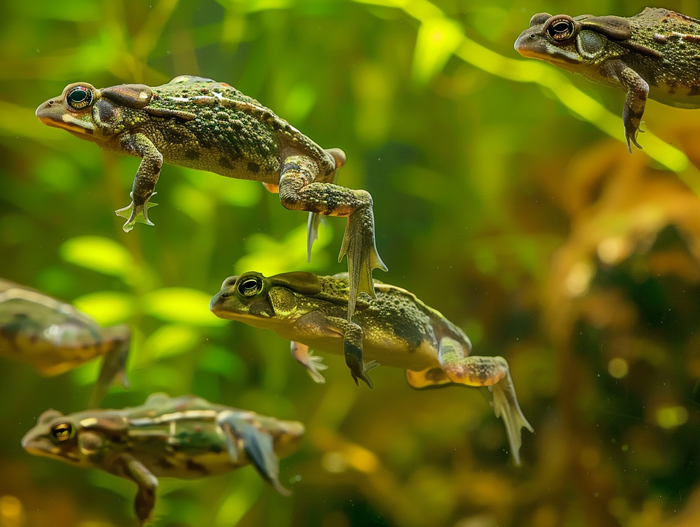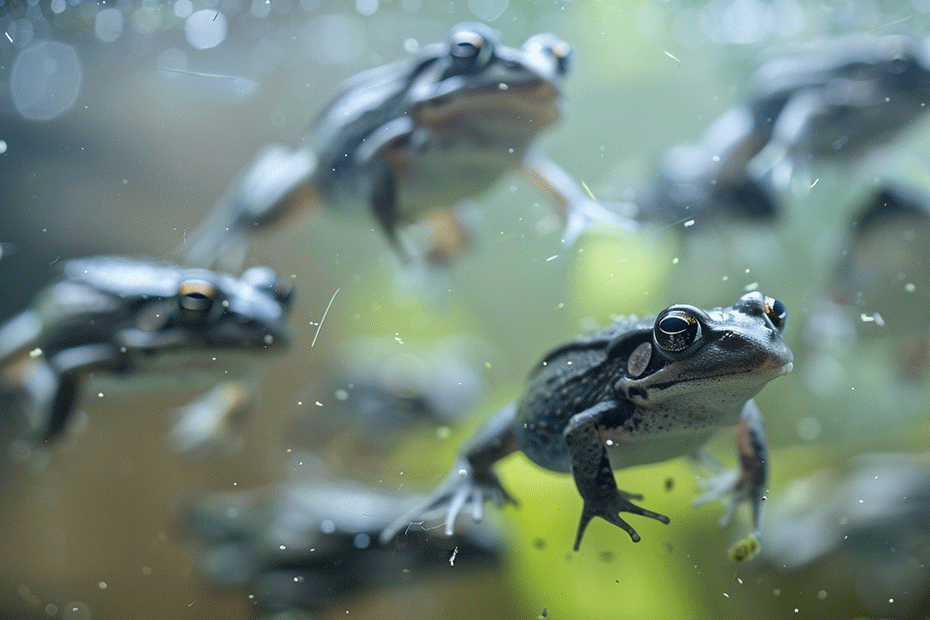Curious about the connection between toads and tadpoles? Ever wondered if toads go through the same life cycle as frogs? In this text, we’ll jump into the intriguing area of toads and their tadpole counterparts. You’re about to uncover the truth behind this intriguing question.
Toads are often associated with their froggy cousins, but do they truly have tadpoles of their own? Understanding the life cycle of toads can provide valuable insights into their development and behavior. Stay tuned as we explore the relationship between toads and tadpoles in more detail.
Key Takeaways
- Toads do have tadpoles that undergo metamorphosis to become young toads.
- Tadpoles have gills and a tail for swimming but develop legs and lungs during metamorphosis.
- Common predators of toad tadpoles include fish, birds, insects, and other aquatic creatures.
- Toad tadpoles require clean, oxygenated water, shelter, and optimal temperature for healthy development.
- Tadpoles are omnivorous, and their behaviors vary across different development stages.
- Understanding the life cycle and habitat needs of toad tadpoles is essential for supporting their growth and survival.
Do Toads have Tadpoles?

Understanding the Life Cycle of Toads
- Toads are amphibians that lay eggs.
- Tadpoles are the larval stage of toads that undergo metamorphosis.
- As tadpoles, they have gills and a tail for swimming.
- Tadpoles develop legs and lungs during metamorphosis.
- They absorb their tail and transition into young toads.
- Young toads then grow into adults, completing their life cycle.
Remember, toads do have tadpoles, but they undergo a remarkable transformation to become the toads we know.
Factors Affecting Toad Tadpoles

Predators of Toad Tadpoles
- Common predators: Fish, birds, insects, and other aquatic creatures.
- Threats: Predators pose significant risks to toad tadpoles’ survival.
- Adaptations: Tadpoles may develop camouflage or protective behaviors to evade predators.
Habitat Requirements for Toad Tadpoles
- Water conditions: Tadpoles need clean, oxygenated water to thrive.
- Shelter: Vegetation and hiding spots are crucial for protection.
- Temperature: Optimal temperature ranges ensure healthy development.
- Feeding habits: Tadpoles are omnivorous, consuming algae, plants, and small invertebrates.
- Swimming skills: Tadpoles use their tails for propulsion and maneuverability.
- Development stages: From hatching to metamorphosis, toad tadpoles exhibit varied behaviors.
Stay informed about the factors influencing toad tadpoles to help support their growth and survival.
Conclusion
Toad tadpoles face various challenges in their environment, such as predators and habitat requirements that play crucial roles in their development. Understanding these factors is essential for supporting the growth and survival of toad tadpoles. By adapting to threats and having specific habitat needs, tadpoles demonstrate remarkable resilience and survival strategies. Their feeding habits, swimming skills, and behaviors during different life stages provide valuable insights into their fascinating journey from hatching to metamorphosis.
Remember, creating a suitable environment with clean water, vegetation for shelter, and optimal temperatures is key to ensuring the well-being of toad tadpoles. Your knowledge and efforts can make a significant difference in the conservation of these unique creatures.

Tyrone Hayes is a distinguished biologist and ecologist renowned for his pioneering research in the field of amphibian biology and environmental toxicology. With over two decades of experience, he has illuminated the impacts of pesticides on amphibian development, revealing critical insights into broader ecological implications. Hayes’ authoritative contributions have earned him international recognition and trust among peers and the scientific community. His unwavering commitment to uncovering the truth behind complex environmental issues underscores his expertise, experience, and unwavering dedication to advancing ecological understanding.
